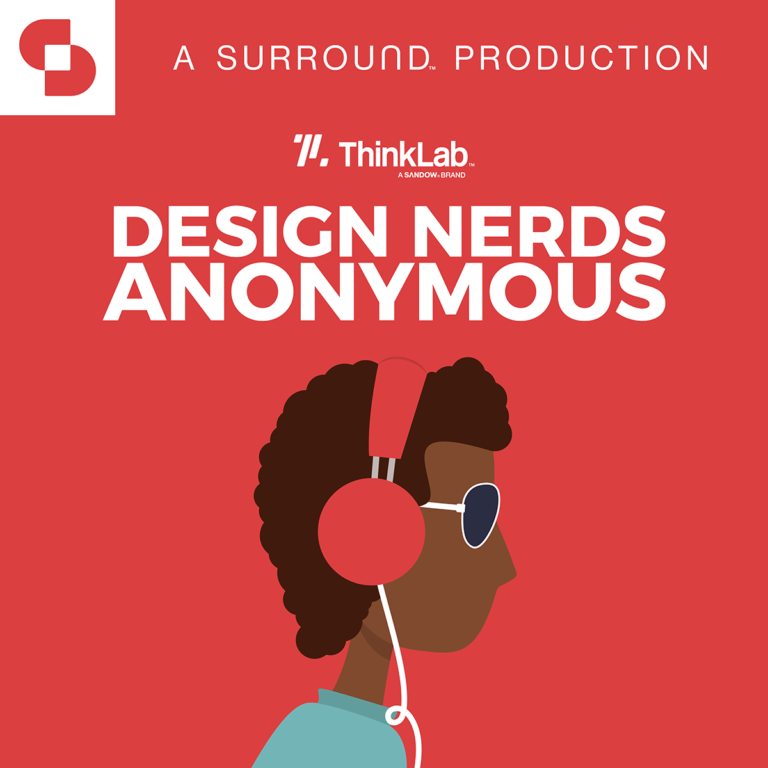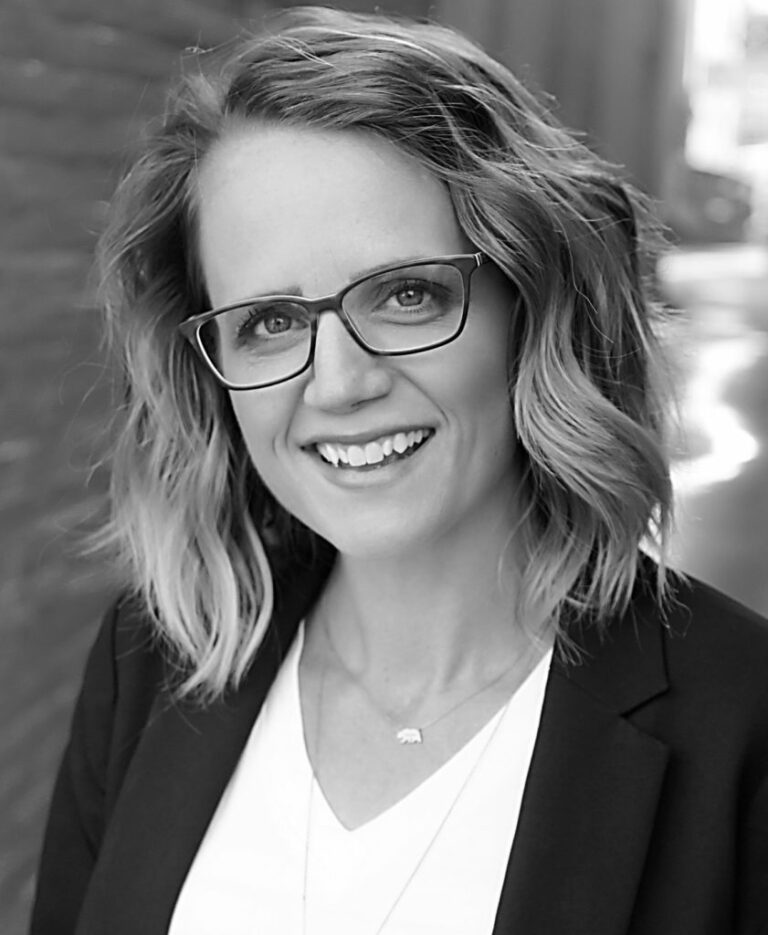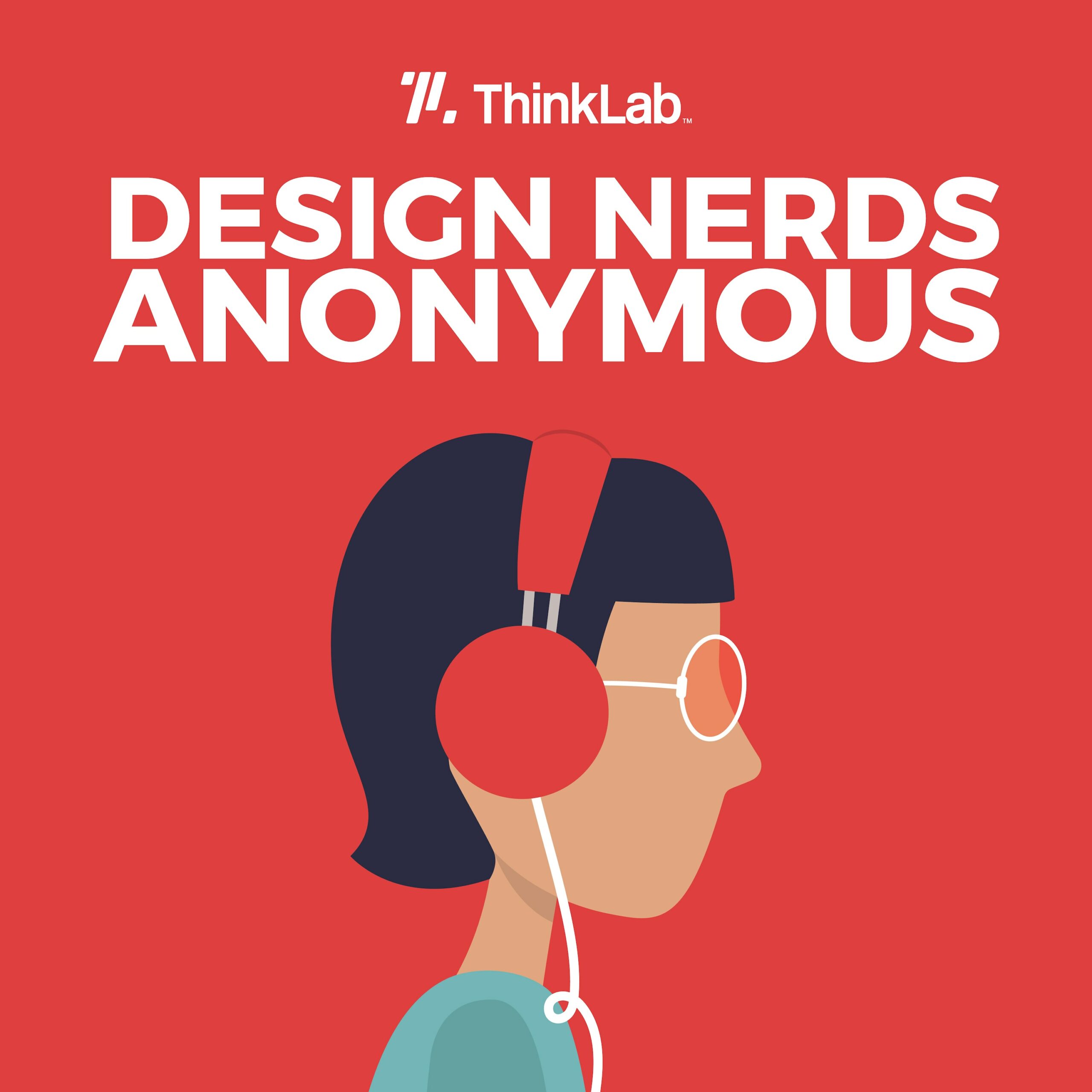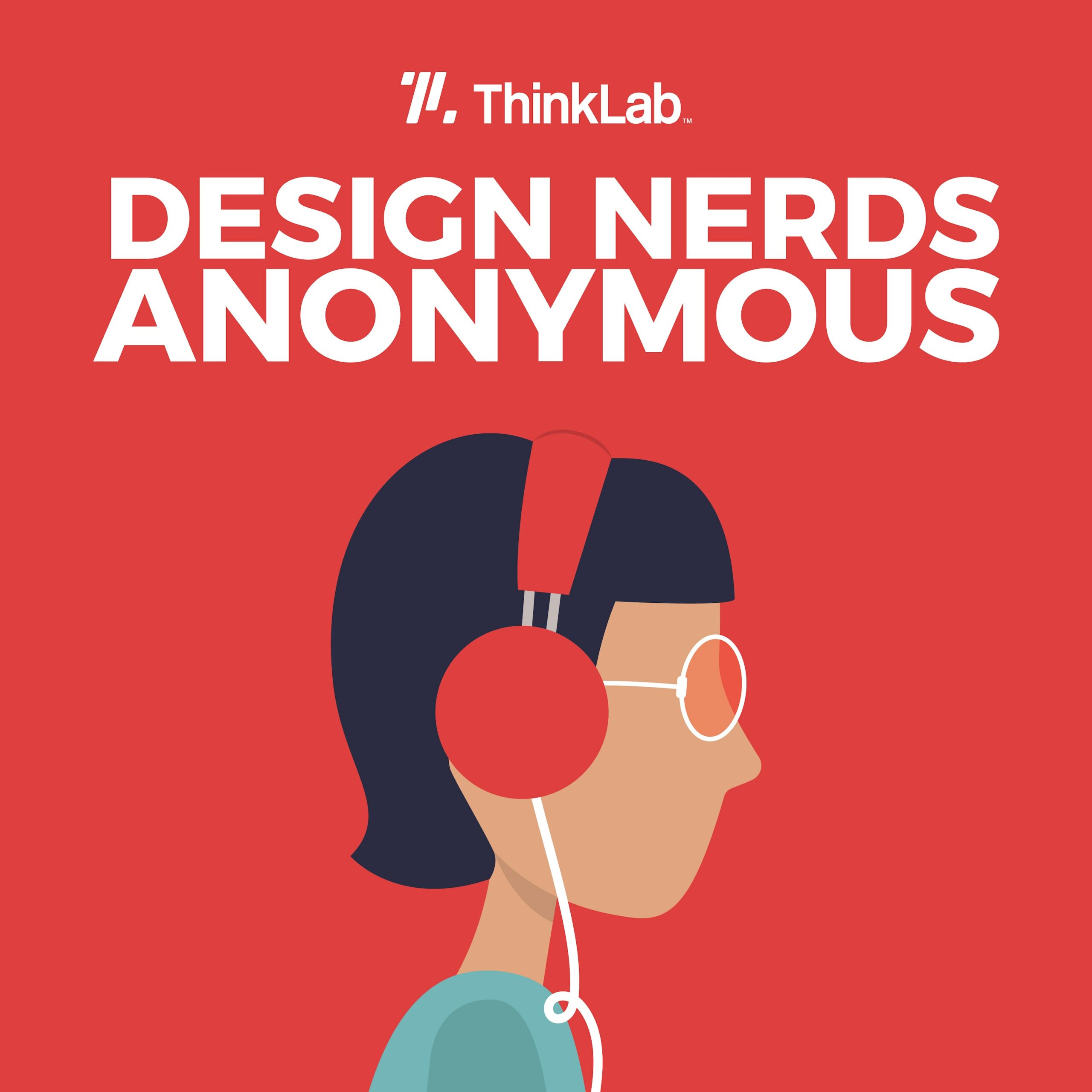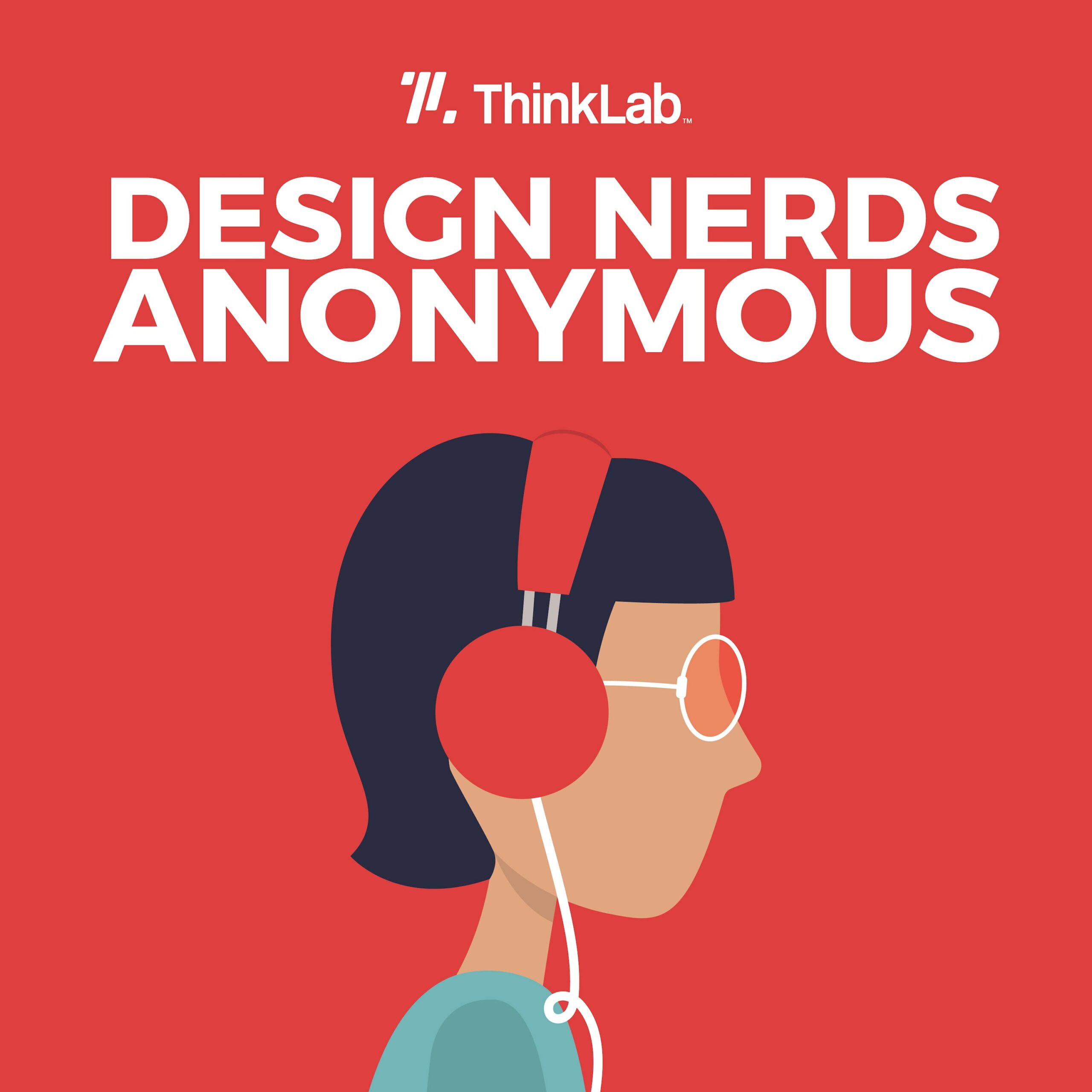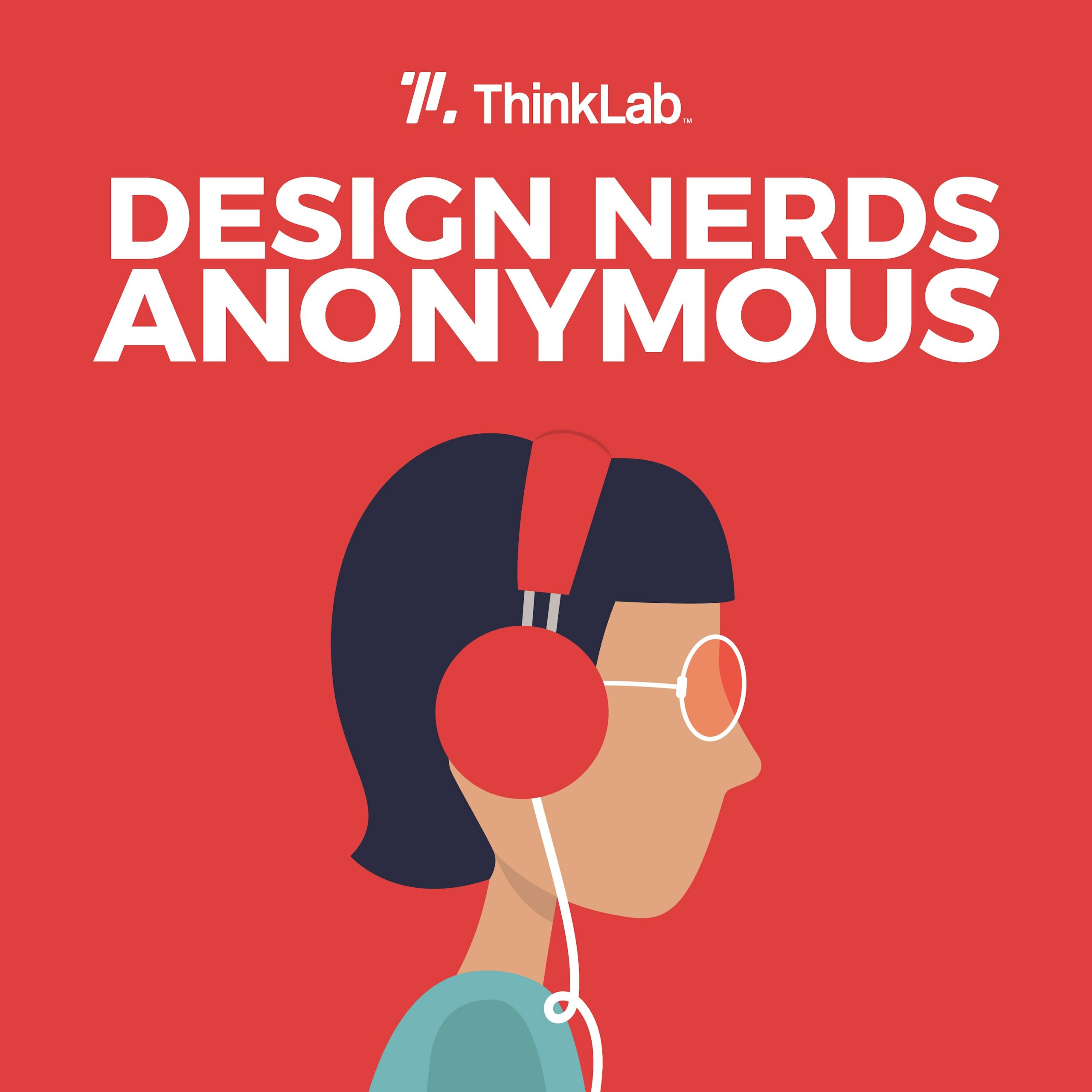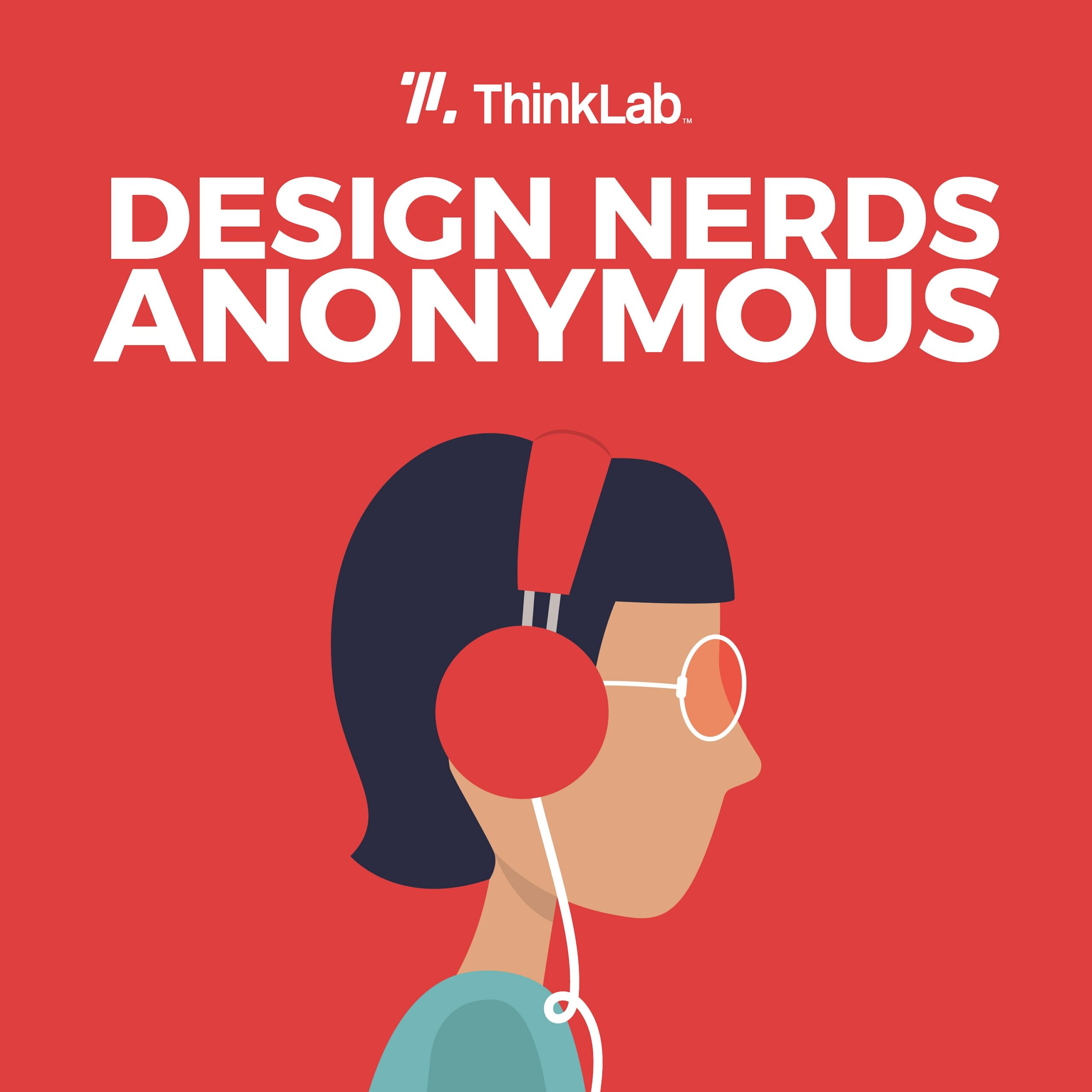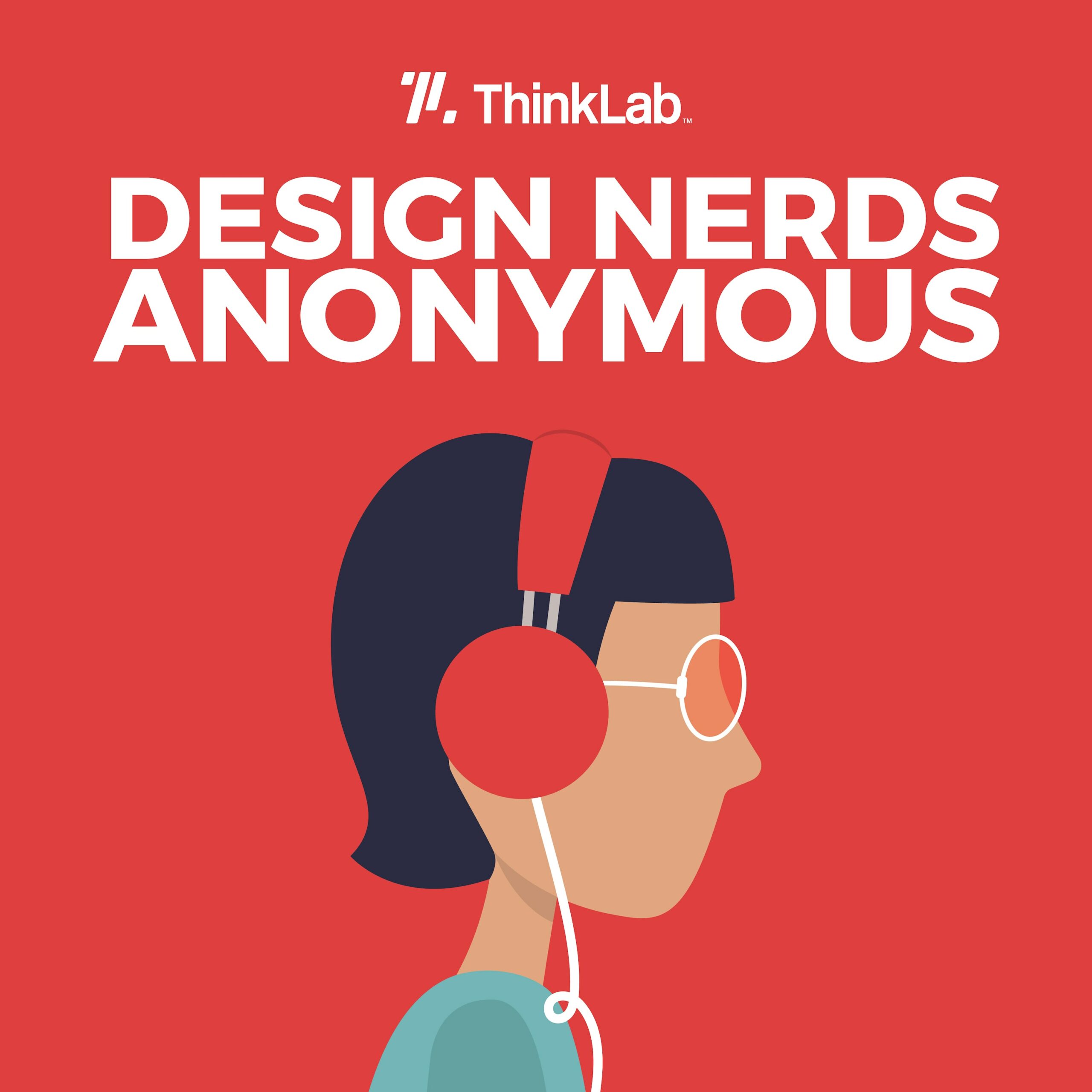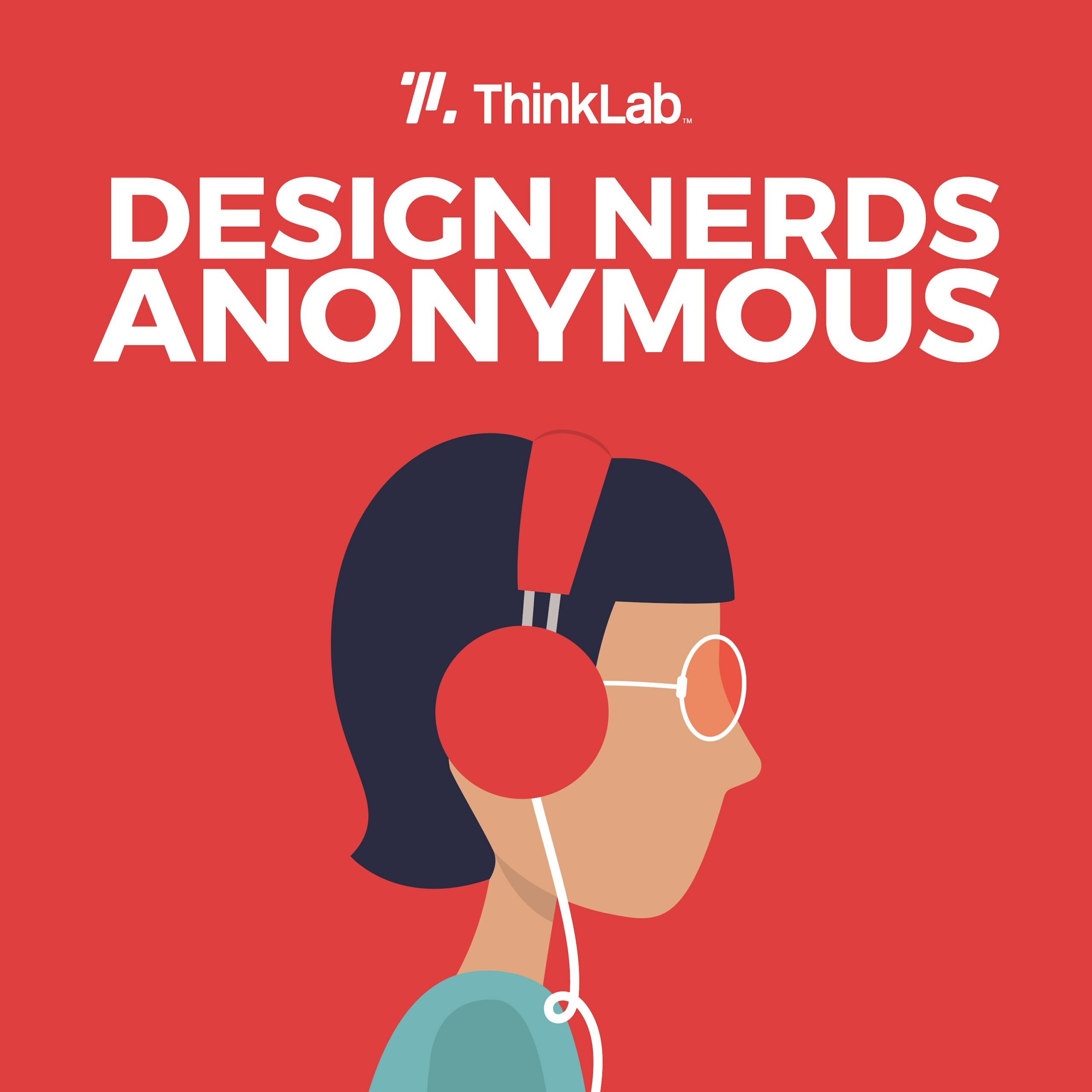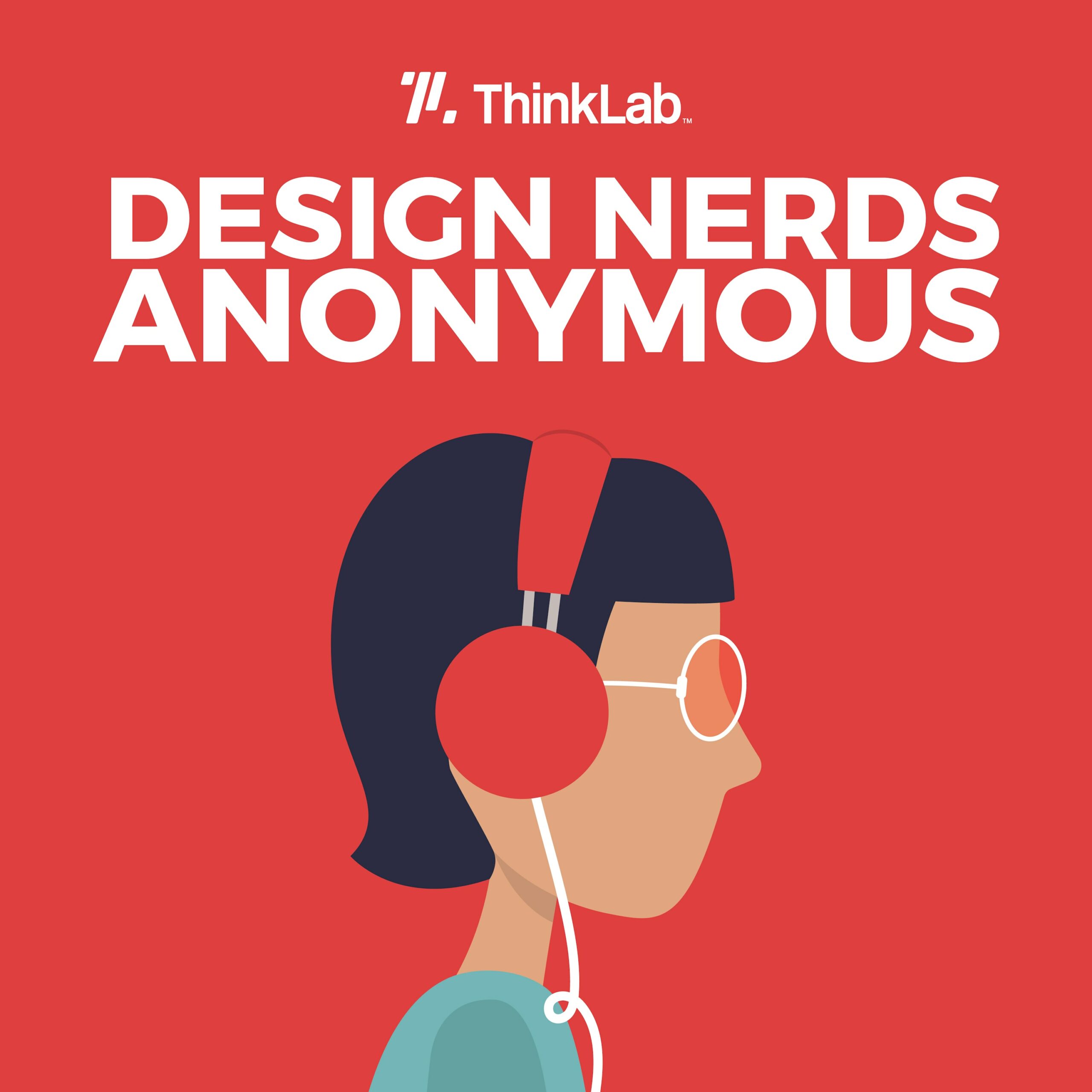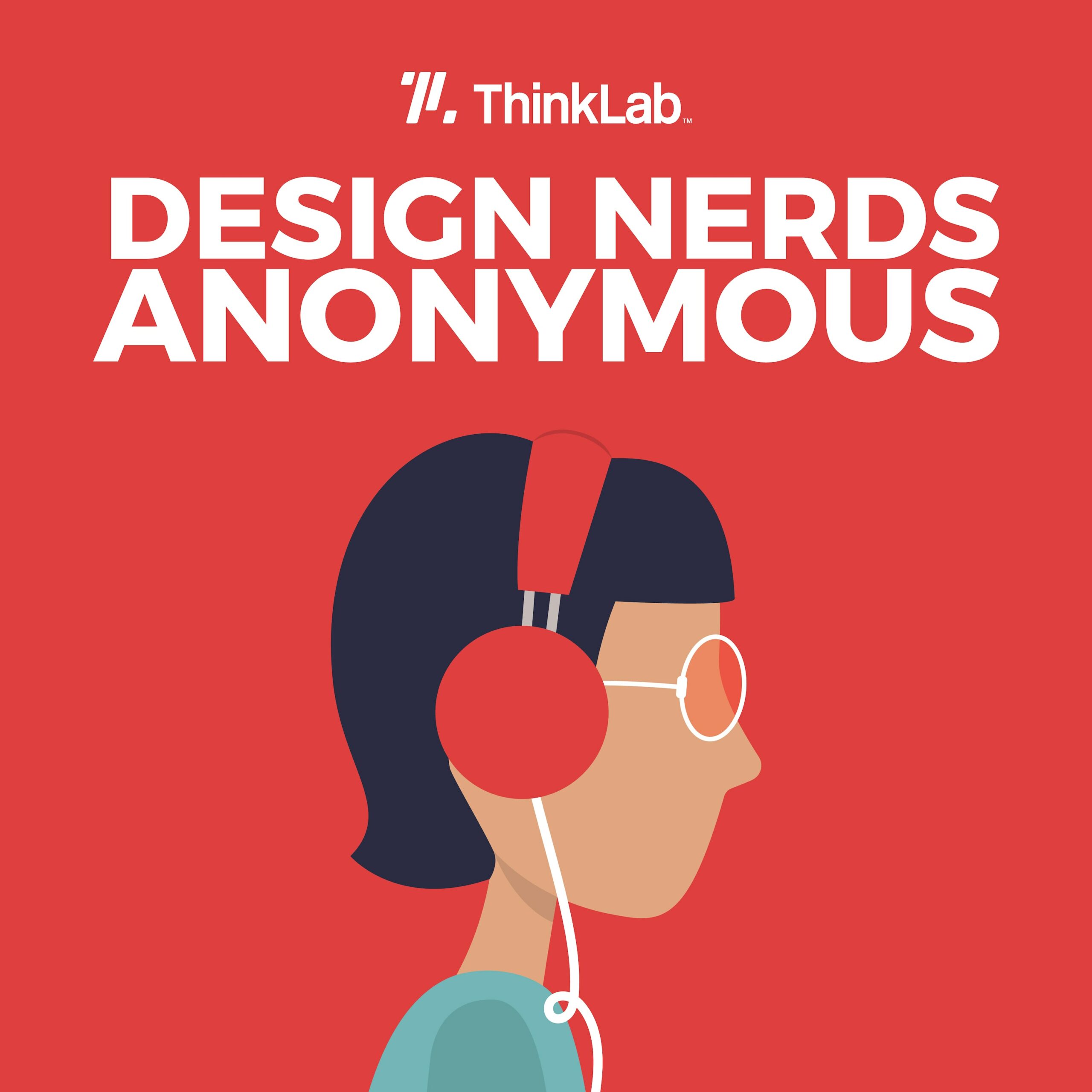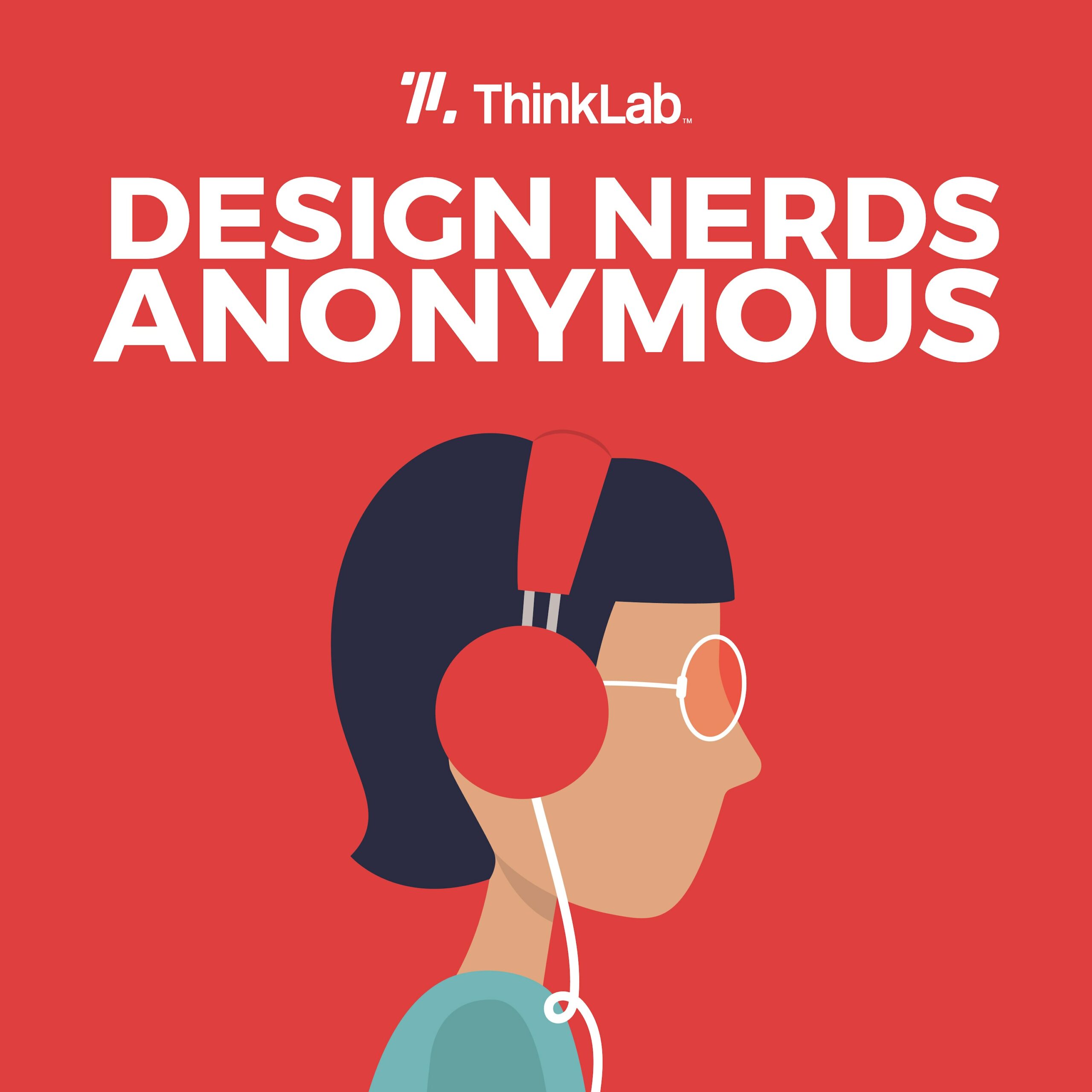In this episode, ThinkLab interviews David Schwarz, founding partner at HUSH, about the design firm’s innovative approach to sustainability, and Rebecca Best, head of sustainability at Material Bank, on how the world’s largest material aggregator is helping designers make more sustainable decisions.
Our first guest is David Schwarz, founding partner at HUSH, an experience design firm. Schwarz shares forward-thinking ways HUSH is leveraging design to connect the occupants of a space to how their own daily microdecisions affect the sustainability of a building. To that end, he describes an award-winning project, designed in partnership with United Therapeutics, which sought to make a building’s cutting-edge engineering visible and able to be appreciated by workers and visitors.
Our next guest, Rebecca Best, is vice president of sustainability at Material Bank. She explains that sustainability is so complex — requiring designers to balance climate, human health, and social justice concerns — that it can’t really be simplified. She counsels design firms to focus on making the decision-making process more efficient and shares strategies for how to empower clients.
In this episode:
[4:12] David details the two-part mission behind HUSH’s memorable project with United Therapeutics.
[15:55] “We don’t want to require that our clients become sustainability and energy experts.”
[24:17] Rebecca describes the most pressing sustainability concerns by sector.
[28:56] Rebecca speaks to the importance of celebrating small wins as a way to encourage collective action.
Connect with our interviewees on LinkedIn:
David Schwarz
Rebecca Best
This season of Design Nerds Anonymous is brought to you by Mannington Commercial, theMART, and NeoCon, companies doing big things to move the design industry forward.
Download our leading-edge playbook: 5 Personas and 50 Ways to Design Their Phygital Journey.
Design Nerds Anonymous is a proud member of the SURROUND Podcast Network. Discover more shows from SURROUND at surroundpodcasts.com. This episode of Design Nerds Anonymous was produced and edited by SANDOW Design Group, with music from Blue Dot Sessions. Special thanks to the podcast production team: Hannah Viti, Wize Grazette, and Samantha Sager.
Amanda Schneider: From designers and architects to even the occupants of a building, most everyone wants to make the right choices for our environment, today and in the future. But as we know all too well, sustainability is complex. In the USGBC’s recent Future of LEED publication, they state, “How can humanity drastically transform its approach to the buildings and communities where we live, work, learn, and play in such a short time?”
What started as self-imposed timelines has become more urgent as we acknowledge that without radical change in the way we address the built environment, the repercussions for the generations that follow will be unthinkable. This episode will explore the design industry’s role in helping to make those microdecisions all add up.
David Schwarz: They’re just reminded that they’re part of this delicate ecosystem, and so in a sense, they get empathy for the building and how it needs to perform well for the planet. And that translates into microinteraction.
Amanda: The voice you just heard was from David Schwarz, founding partner at HUSH. In chapter one, we’ll explore more with David about innovative ways that they’re leveraging design to demystify sustainability and connect occupants with their daily decisions. Then, in chapter two, we’ll explore how to make it easier for designers to make better sustainable choices with Rebecca Best, Material Bank’s head of sustainability.
Welcome to season four of Design Nerds Anonymous, the podcast that sparks curiosity at the intersection of business and design. I’m your host, Amanda Schneider, founder and president at ThinkLab, the research division of SANDOW Design Group.
So let’s dive into chapter one. Here’s our first [00:02:00] interviewee.
David: I’m David Schwarz, one of the founding partners at HUSH, an experience design firm.
We’re the storytelling layer between architecture and people. We’re using space to be a medium by which to convey big ideas — a company’s mission, purpose, vision — and to activate and inspire the people that inhabit these spaces.
Amanda: Metropolis recently estimated that by 2050, the interior design industry will have influence over nearly one-tenth of global carbon emissions. What fascinated us about David and his mission at HUSH is how they’re leveraging their creative superpowers to connect the occupants of space to how their actions impact the ongoing sustainability of a building.
David: You can really have an impact and do amazing things that are creative, good for the world, good for your clients, and really inspire your own people.
Amanda: So, let’s explore the project that gained them [00:03:00] traction, and how leveraging physical space to design experiences can amplify interior design’s impact on sustainability.
David: This project was with United Therapeutics, which is a publicly traded biotech company based outside of D.C. So, for everyone listening who knows anything about sustainability and energy and net-zero buildings, you probably know it’s really hard to do on the East Coast where we have a lot of fluctuation in weather and climate. Buildings have to work really hard to achieve net-zero energy here because, because of those swings.
So the CEO of that company, Martine Rothblatt, who’s an amazing CEO, incredible businesswoman, spoke at TED, said, “If we’re going to build another building, we have to do it at the edge of innovation of architecture and engineering.” This is her methodology and mindset for almost anything she does.
So we learned how net-zero buildings work — from, obviously, solar [00:04:00] generation to all the internal engineering — as if they use no more energy than they consume in a calendar year, so they have no additional impact on the earth by being there. And buildings’ internal engineering and systems to make them perform are the second-largest carbon offender on the planet. That’s why I think everyone’s so focused on the built environment right now.
Amanda: David walks us through the mission for part one of this project.
David: So, through this project, we were asked to do one part of a two-part sustainability mission. The first part is truly about awareness and storytelling and, psychologically, we all have to become aware and focused on something and set our intentions before we take action. It’s just the way our minds work. So this was the big part about intentionality and focus and visibility.
Here’s the irony about the built environment: Even the most energy-efficient buildings, be they energy neutral or carbon neutral, for the [00:05:00] layperson, the built environment just looks like the built environment. You walk into a transit hub or office or a store or an educational campus. You don’t know anything; it could be beautiful, it could be not. But the complexity of achieving sustainability, especially net-zero sustainability, is all hidden from us. So all this investment and cost in engineering and complexity to solve this sustainability problem is hidden from our eyes.
It’s as if businesses are willing to spend hundreds of millions of dollars to build these incredible things, but then they forget that telling people that they’re incredible things is as important as the spaces themselves.
So, in a very simple thesis, we worked with United Therapeutics to make the invisible visible, to turn all of this invisible, complex, and amazing innovation and building engineering into something that’s visible to anybody.
We did that through a series of experience [00:06:00] designs and interventions in the built environment at many different scales, one of which is a 40-foot-diameter light sculpture that sits inside the atrium of the building. And what it does is just by shining very low-resolution, low-energy light around in this beautiful radial pattern, everyone who sees it knows if the building’s producing more energy than it’s using or using more energy than it’s producing. And because of its primary location in the atrium, that means all of the hundreds of workers and visitors who enter there, day in, day out, are reminded of their intimate connection to the energy of the building and that, without recourse or admonition or any kind of “tsk tsk” kind of behavior, they’re just reminded that they’re part of this delicate ecosystem.
And so, in a sense, they get empathy for the building and how it needs to perform to perform well [00:07:00] for the planet. And that translates into microinteractions. So an employee might decide to put on a sweater instead of turning up the heat, maybe turns off the lights when they’re going down for a coffee, even if they’ll be back in five minutes. Now, these seem like almost inconsequential actions when you think about them individually, but when you start to look at them in aggregate over all employees every day, over 5, 10 years, they actually add up.
And that was the goal of Martine and the entire business, which was really to make people more aware of this vision. Make them do their part as part of this delicate ecosystem. Have them have more intimacy with the building, what the building’s doing, and have them be proselytizers of the subject matter.
In addition to this big statement, which was intended to be artistic and soft in its messaging, there’s some much more detailed data visualizations and environmental graphics and things that really just, like, teach you about this subject matter [00:08:00] in a very passive way where, day in, day out, you learn about the different pieces of this thing.
It was effectively an experience design that promotes all the complexity of sustainability and net zero, but intended to be shared as a story that is dripped to people and guests as they’re there over time. And so, it was very delicate and beautiful and integrated in a very matter-of-fact way.
Amanda: Beyond storytelling, let’s hear about the second piece of this project, which deals a bit more around the tools we have in our tool kit as designers.
David: And so that kind of leads to the second part of our sustainability thesis, which is where we’re in right now, which is: How do we design sustainability through our decisions in the actual work we make, not the storytelling? How do we ensure that what we’re making, what we’re putting into the world as designs, also fit within this [00:09:00] sustainability framework and vision as to have a positive impact on the planet?
And that gets way more complex. One metaphor is that a color in our palette of colors that we can paint with is digital and technology. So we’re known for injecting spaces with interesting interactive and sensorial sort of experiences. The subtext to that and the reason why we’re brought into projects often are because our clients want to leverage technology or digital storytelling in some way. Well, if you think about it, nothing digital or technological is good for the planet — nothing.
So, when we get a phone call or an email to say “Hey, can we work with you on X?” we’re already starting in the back seat. If we were a firm that specialized in architectural greenery or biophilia, we would be starting on the front foot, in a proactive [00:10:00] stance: “Great, so what we’re bringing to this is actually a positive contribution to this experience and the environment.”
However, what we do from the start is challenging our ability to be sustainable. Digital software and content is energy heavy. It requires server farms and just, like, massive energy consumption. Technologically from a hardware and product standpoint, we’re talking about things that probably come from China, have a huge carbon cost to get here, to procure, that have really problematic life cycle problems, where they’ll probably end up in a landfill forever. And very little consideration of what happens on in the future and how to gracefully degrade them.
So our sort of palette of design is already encumbered by this environmental mission we have, but rather than shying away from that, we’ve chosen to look at it as an [00:11:00] amazing design problem and challenge and opportunity to overcome. And if we can be the best firm in overcoming it, then we’re achieving what we need to achieve.
So the good news is that United Therapeutics project taught us a lot about how we were going to do this. Because while we were focused on storytelling in that case, we were also required to work within the building’s overall energy budget. So the ideas we came up with weren’t random; we had to make sure that giant light sculpture we built actually drew very, very little energy.
And so we worked to design it technologically, materially, physically, so that it would be very low consumption of energy. And that was on purpose. And the result was really interesting. We were able to do something with a huge storytelling impact for very minimal additional energy costs. And so the net [00:12:00] impression, the net effect was incredibly positive.
That’s the kind of thinking we’ve taken now into work with the second building that United Therapeutics is building right next door, which is a mass timber, zero-carbon building. And we’re working on how to figure out how materiality, technology, and digital all work to fit into that model — which is even more complex because we’re dealing with the carbon costs of material production, material transport, and the operational material in the building itself. So you added a whole lot more pieces to that equation, but again, from a design point of view, we’re still doing the same thing, coming up with wonderful ideas that are good for the planet and have very little net-addition impact on the planet.
Amanda: And as a data nerd, I couldn’t resist asking if there were any measurable impacts that could be noted from building one. [00:13:00]
David: We have some good qualitative feedback around people’s behavior and understanding their connection to the mission. That stuff is in United Therapeutics’ annual report: There’s tons of awards they won for the building from an engineering standpoint, as well as a storytelling standpoint. It was Fast Company’s World-Changing Idea for building experience. I think there’s a lot of reasons to believe that folks are legitimately affected and conscious of this. So that’s a positive, and that’s pretty much the kind of data we were trying to get back from an experience like this.
Amanda: But beyond the awards, the HUSH team is proud to be leveraging these projects to push the vision even further.
David: The vision [for United Therapeutics] is that, as the largest real estate owner in Silver Spring, Maryland, the city in which they work, the campus is becoming this total sustainability storytelling venue. Through visiting and going from building to building, people will [00:14:00] actually experience all the ways in which the built environment can be made more environmentally conscious, as well as touring the business itself. And these are very high-level folks who are working there or visiting, so it has the opportunity to, like, really move people with a lot of power to control this kind of subject matter.
Amanda: They’re also leveraging what they learn to push their own design process further.
David: For us, what it did was it forced us to come up with a framework to do all of our design work around. We’re making similar choices to support the mission of making things that are sustainable and telling sustainability stories. So what happened was we figured out, like, how can we control this stuff? How can we put forth a framework to talk to our clients about and have them help us evaluate our design ideas through this lens collaboratively?
Because if you don’t put it forward, front and center, it doesn’t get talked [00:15:00] about. It will become an asterisk to the design work, and they’ll say, “Oh, that’s cool. Maybe. We’re also value-engineering, and that would be harder.” And so, we lead with it in our design work, and we say, “Hey, here’s why these concepts are working, and here’s how we’re evaluating them. They don’t all perform the same way; from a sustainability grading, they may be different.” You might make a concession here for a value there, but at least we have the same language to interrogate a design concept, to know what we’re trading. What’s the value of the impact of story and empathy versus what we might have to spend to achieve that?
And so, we have a three-part system that we’re really leaning into, which isn’t maybe unique to us but is important to us. It’s based on materials, energy consumption, and life cycle. And if we can look at those three things and self-grade ourselves based on information that’s readily available, or working with specialists and [00:16:00] engineers to help us understand those costs, we can present our design concepts and our work with our client in very layperson terms.
We don’t want to require that our clients become sustainability and energy experts. And we also don’t want our design teams to have to know everything granularly, because it stifles creativity. So, how can we get to a layperson evaluation of our work through these lenses and say “You know what, this is really interesting, but if we use this other type of material, it’ll have almost the same visual impact or quality but it’s recyclable.” Or “We could achieve that material by getting something from our client that is part of their own operational production process.” Or “If we choose this design, we may have much less energy consumption, but we could still achieve scale and visibility through these other means of material proportion” or something.
It’s really amazingly simple in a lot of the ways it comes down to these microdecisions that you make every day [00:17:00] as designers and just the consciousness to disregard a few options in favor of another few options. And you start to really track towards these goals and actually doing the work you say you’re going to do.
Amanda: As we look at this idea of simplified consciousness for product selection, it’s probably a perfect way to segue into chapter two.
Rebecca: When you mention amplifying your impact, something that I’ve seen pervasively throughout the industry is that inherently everyone wants to make a difference. Just having a lot of education but not actually being able to turn that into action has, I think, really been a roadblock for a lot of architects and designers and even brands.
Amanda: Meet Rebecca.
Rebecca: My name is Rebecca Best, and I lead sustainability for Material Bank. What’s really exciting in this role that I’m playing in the industry right now is working within a workflow tool that allows designers and architects to actually take action and specify [00:18:00] responsibly, because they’ve got tools right there in their toolbox that they’re using every single day.
Something that we see within our platform is that designers never once said they have extra time. And so, if time is an issue and it’s not easy to get access, those things combined make it really difficult for designers to be able to make sustainable choices.
So, if we are able to consider time and efficiency and put tools in front of designers so that they can actually make it part of their baseline criteria — they almost don’t have to think about it — then that is really where the win is going to be, where designers and architects can start, with ease, sampling and making specification decisions that are around human health, climate health, social justice, and equity.
Amanda: We asked Rebecca, “If everyone wants to make better decisions, how can we simplify the decision-making process to make that possible, faster and easier?”
Rebecca: It’s interesting because we always want to simplify things. [00:19:00] And really, when you talk about sustainability — and if sustainability encompasses climate and human health and also social justice and equity — it’s really difficult to think about simplification, because it’s pretty complex. Like, this is actually not a simple topic. What I see, consistently, is that every firm and every designer, just like every brand, really has to make a decision: What are they going to lead with? Is it going to be focused on carbon neutrality without letting the other things go by the wayside?
But everyone kind of has to pick their headline because it is really difficult to tackle all three at the same time. Simplification within design specification around climate change — it’s really not all that simple. So, where I think that the simplification can come from is in the efficiency and is in allowing people to make quick decisions based on what their particular project is looking for. [00:20:00]
Amanda: In ThinkLab quantitative data, we often ask about the largest selection criteria for product. Shockingly, sustainability, relative to other criteria, often ranks lower than you would expect. Yet anecdotally, when we have these softer, qualitative discussions, sustainability is a huge topic. So we asked Rebecca to talk to us about the relative level of importance of sustainability and how that’s changed recently or not.
Rebecca: I was just having a discussion the other day, and one of the things that came up was exactly this. What we hear all the time is that people really want to make good, solid decisions around climate change and around climate health and carbon neutrality and decarbonization of the environment, but aesthetics trump everything. And we see that in our search filters. We see that it’s brand and color and application and pattern and texture — we see that those are the top search filters.
And so, part of what we’ve [00:21:00] done to address this is to make it a lot easier for the designers. [We] say: You know what? We know that at the end of the day, potentially, price and aesthetics trump everything in your design. So if we’re able to allow you to, with the click of a button, put a sustainability criteria ahead of all of those, so that you’re almost not even thinking about it — if I can tell you that every time you look for flooring, you can click a button that says “flooring with embodied carbon,” and then you can go from there, select all of your prime aesthetic characteristics and filters — suddenly that makes the decision-making for the designers so much easier. But they’re able to prioritize and simplify the decision to put a product that has embodied carbon data, or an EPD, or human health data. Whatever their choice is, we can put that right at the forefront.
Amanda: As we look at putting brands at the forefront of these critical sustainability selection criteria, I asked Rebecca to share her advice to product brands.
Rebecca: I don’t think that there’s much [00:22:00] room in the industry right now to not invest in certifications and declarations. I just don’t think that there’s space for that. Every large brand has already made very significant climate commitments. So, making sure that you have an EPD, making sure that you’ve got transparency documentation. Because that’s really in, in a lot of cases, that’s the number one filter that’s happening.
We don’t even actually care about the data that’s in it. We just care that you’ve done the work to get it. So if you’re a larger firm, I think that’s absolutely number one. There’s no excuse to not invest in documentation. If you’re a smaller firm, if you’re a smaller brand, I think that being authentic and telling your brand story and making sure that is front and center is absolutely critical.
I was just speaking with a manufacturer the other day that is local to Boston and manufactures there. They are 100 percent in control of their supply chain, and they’re able to give, anecdotally, information on every piece of their supply chain and everything that they do locally. That is [00:23:00] incredibly powerful, especially if you are a designer in the local Boston market. So, maybe the manufacturer doesn’t have an opportunity to go and invest at this stage or even research from a certification perspective, but being able to tell that story is absolutely critical.
Because when we think about the focus on climate health and decarbonization, a lot of that is in transportation. And a lot of that is in the manufacturing process when you’re talking about brands. So, as much as you’re able to tell your local story, if you are a smaller local brand, I can’t overemphasize that enough. Because, really, that’s almost the only way that a small or midsize brand has actually been able to compete with a big guy right now, by being able to have an authentic, locally sourced story versus a big brand that are all competing neck and neck, with certifications, transparency, documentation, what have you.
Amanda: But knowing that everyone listening has to prioritize their time, energy, and investments, Rebecca takes us one level deeper to help us hone our focus. [00:24:00]
Rebecca: When I think back and I look at all the firms that we deal with, obviously, we’ve got thousands of firms that are using Material Bank. But when I focus on, let’s say, 70 firms that are often sitting at the top 100 firms that all have very strong sustainability commitments, even within those firms, they’ve still had to look at their impact in the type of buildings that they’re building and the sectors that they’re working in. And that is often driving the decision-making around sustainability. And when I talk about sustainability, I want to talk about it broadly being really climate, human health, and social health and equity.
I wish I could just blanket it and say, “These are the top filters. This is what most firms are prioritizing.” But when you think about it sector by sector, workplace — that’s the one sector where I see most often that you have climate health, human health, and social health and equity, those three buckets, all being heavily prioritized almost equally as far as product selection.
But depending on the sector, as far as their key [00:25:00] vertical market, [designers] might be really interested, if you’re in healthcare or education, in Red List Free — transparency is huge — and lower impact on human health and better indoor air quality. Whereas, if you are in another sector, like I mentioned, where we’re really honed in on climate impact, that’s very much associated with public work and government buildings. So, if you are in the hospitality sector and that’s your main client base, probably X criteria is going to be very important to you. If you’re working in government, then climate and carbon impact is going to be incredibly important. If you’re working in the school system, in education, in K–12, indoor air quality is going to be incredibly important there, so the human health aspect.
People often will say, “What’s the best filter? What’s the best certification?” I think you really need to be able to think about it in the buckets of climate, human, social health, ecosystem health, so on and so forth.
It’d be great if we could focus on 10 things, but if we can only have one thing to focus on, what is going to be the focus for this project? And then be able to go back to your brand partners that [00:26:00] most designers and firms have incredible relationships with, and have that dialogue and have that communication.
Amanda: In our most recent ThinkLab research, this persona study, one of our personas is called the sustainability-first persona. This was part of our quantitative work to categorize product selectors based on what was most important to them. And while this persona in our research was technically the smallest, I always say “Don’t be mistaken.” They are small but mighty, with much-higher-than-average specification power.
So, as we look to service this persona, they were also the least likely to want to be serviced by a local rep and were just as comfortable with digital tools or remote service by someone maybe at headquarters for a brand.
Rebecca: It’s just so interesting, going back to something that you had said earlier, that when you conduct some of your research, that you find that sustainability is not necessarily one of the top criteria. I think that there [00:27:00] is a little bit of a sense that sustainability in some way, shape, or form is just expected. So I just wanted to tackle that for a second, because that’s really interesting. We see our behavior on our site, where we also see that sustainability is not the number one selected filter, and it really goes all the way down the list. You’ve talked a lot about simplicity — I always feel like we need to go back to efficiency for designers.
I really think that sustainability is so top of mind for almost every firm, for most design professionals, but that bridging the gap between how important it is and actually the efficiency within their jam-packed schedules and tight timelines is really just this conundrum. It’s a nut that’s really difficult to crack. Because everyone wants to make the right decision, but they’re not able to. And so I think that, where you’re able to, get streamlined data as quickly as you can.
I’m not at all surprised to [00:28:00] hear that 5 percent are so focused from a sustainability-first perspective that they’re just like, “Get outta my way, get me the data. I don’t need anything else. And let me just move ahead, because I know I’m going to be unwavering in my selection here.”
It does consistently surprise me that even for the most well-intentioned designers that I work with, if sustainability is not easy and efficient and right in front of them, just human nature dictates the path of least resistance. And when you’re on a time crunch and you need to get your specs in, unless this is something that is absolutely mandated by the client, even the most well-intentioned designers, for the most part, potentially will waver. Which is why I’m so excited about the work that we’re doing to be able to make it as easy as possible and be able to say, “You don’t need to waver, because now you can just put this initial search filter in and then go and do all of your other work.”
Because I know that people don’t feel good about that. They don’t feel good about wavering unintentionally. If [00:29:00] nobody has time, then you just end up following that path of least resistance.
Amanda: So, to close out this episode, Rebecca challenges us with something that may seem quite simple.
Rebecca: Something that we don’t do in the world of sustainability is celebrate small wins. And whenever I talk about this, I feel like the response from a designer is always “Oh yeah, I hadn’t thought about that.”
When we think about the life span of a child and even of a human being, in the first X number of years of everybody’s life, every single thing that we do, someone is on the sidelines cheering “Hurray!” You eat your first little piece of banana, and they’re like, “Oh my God! You ate that banana!” You take your first little step, you crawl, you sit. And all of those things form the development of who you are now as incredible people. And we’re constantly there cheering, cheering.
And I feel like sustainability and fixing this climate crisis and addressing all of the human and social issues that we have — and, most critically right now, fighting [00:30:00] climate change — are almost as complex as raising human beings. And if we see raising human beings as a need to celebrate every single little win to be able to get this human being to a point where they feel like they’re strong and capable and going and changing the world, I feel like from a sustainability perspective, we almost need to see it in the same way. We need to see this is a gargantuan effort. It is huge. It is daunting.
My challenge is to actually say, “Make sure that every single win you celebrate.” Because I think celebration is contagious. And I think if we are consistently in every firm, in every office, every manufacturer, celebrating every small win that is a step towards a more sustainable society, a better climate, I feel like all of that collective action will ultimately lead to big change.
Amanda: I want to personally thank our season four sponsors: Mannington Commercial, theMART, and NeoCon.
If you’re fascinated by our research, I’d like to personally [00:31:00] invite you to join in for our next hackathon, kicking off December 2022. Did you know that by 2025, Gen Z will make up 27 percent of the workforce? So, whether you’re a firm leader trying to attract, retain, and lead, or perhaps a product brand trying to connect with the next generation of design specifiers, there will be incredible insights along the way in this research journey.
Most importantly, if you’re a Gen Zer, we’d love for you to make your voice heard. Go to info.thinklab.design/designhackathon to learn how you can participate. Design Nerds Anonymous is a proud member of the SURROUND Podcast Network. Discover more shows from SURROUND at surroundpodcasts.com. This episode of Designer Nerds Anonymous was produced and edited by SANDOW Design Group. Special thanks to the podcast [00:32:00] production team: Hannah Viti, Wize Grazette, and Samantha Sager.

